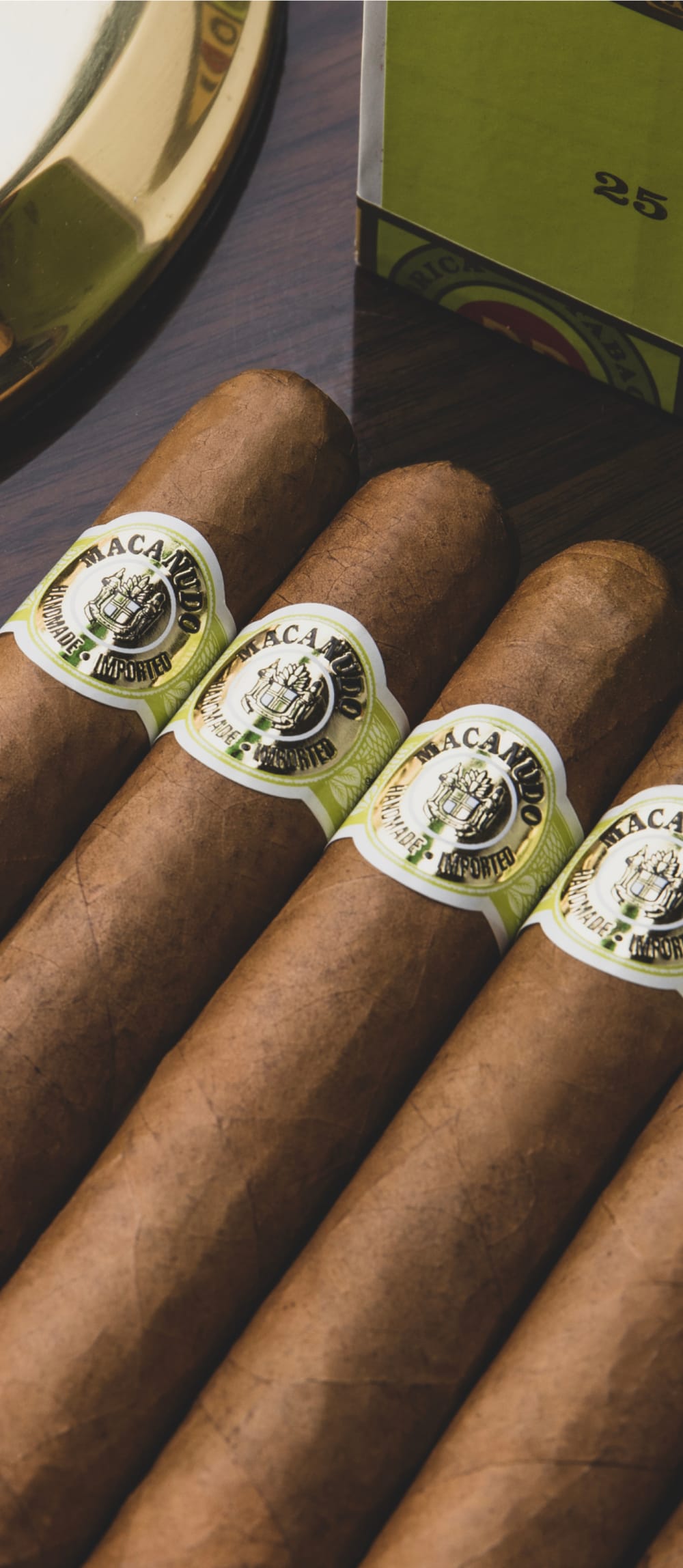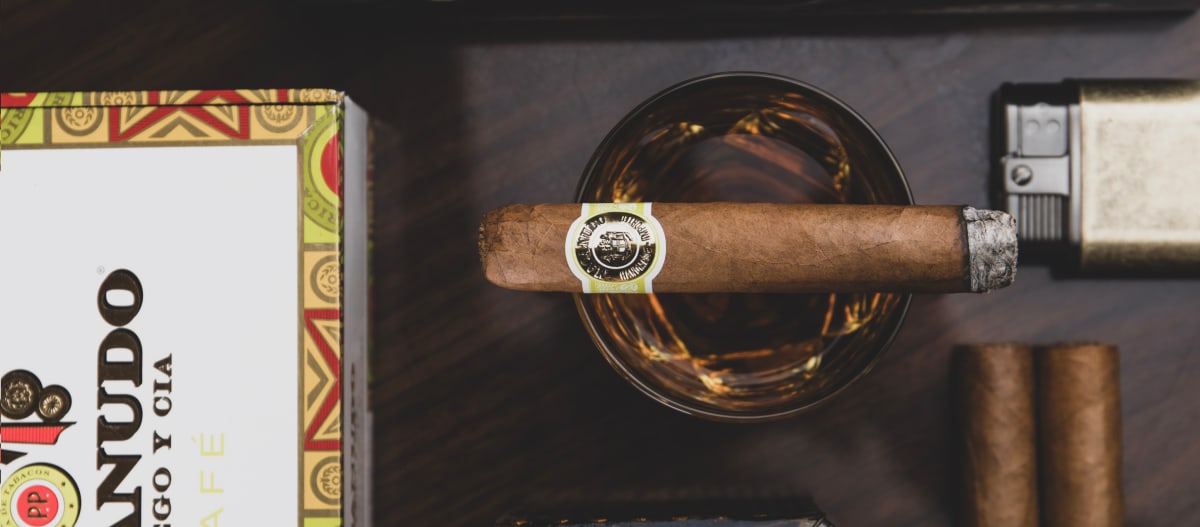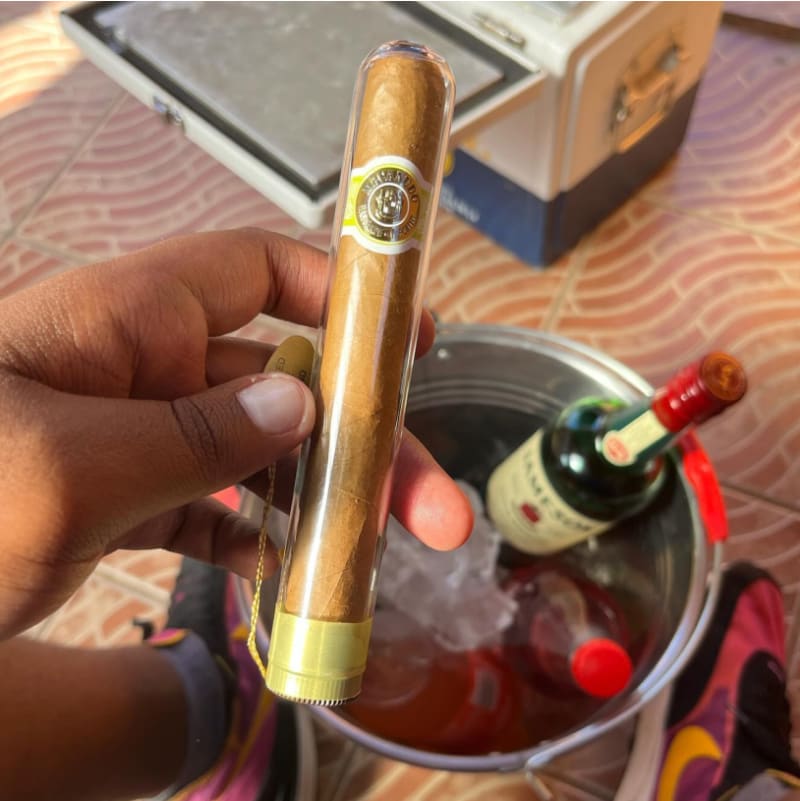
THE CIGAR THAT
STARTED IT ALL
For many, their introduction to Macanudo and cigars in general came through one cigar - Café. A mainstay in our portfolio and one of the most popular cigars in the world, Macanudo Café has been able to do something extraordinary: deliver a blend mellow enough to be enjoyed by those new to cigars while still being complex enough to gain the appreciation of more seasoned smokers.
But the story of Café is not just about one cigar; it’s a journey through the history of Connecticut tobacco itself.

TOIL AND
TROUBLE
Before Café, Macanudo or even what we know today as “shade tobacco,” American cigar makers had a dilemma. As the popularity of cigars grew, they wanted to grow their own tobaccos supple enough to be rolled and blended into cigars, but they had little understanding of what sort of climate, soil and care was needed to make it happen.
Tobacco farmers of the late 1800s simply took seeds from existing cigar tobaccos and threw them in the ground where they stood. From the sub-optimal soil, improper agricultural care and climate conditions, the resulting tobacco was not even close to what was needed to craft a premium cigar.
The crop was a dark, rough, broadleaf tobacco filled with veins so large it became known as “shoestring” tobacco.
AMERICAN INGENUITY
But the farmers got smarter in their quest to craft their own cigars. They began researching different tobacco varieties and what each needed to thrive, and through trial and error, they learned how to grow premium tobacco.
Eventually, they discovered a Sumatran tobacco seed that performed well in the fertile soils of the Connecticut River Valley.
The area’s hot, humid summers and soil constantly being replenished with nutrients from the river made for a perfect microclimate.
But with those hot, humid summers came scorching sun that turned the tobacco leaves thick and dark. Not bad per se, but quite different from the light, supple tobacco they hoped to grow.

INTO THE SHADE
In the early 1900s, the farmers noticed that the lower primings of the tobacco plant were yielding results closer to those they were looking for, and they realized they needed a way to shield their tobacco plant from direct sunlight.
As a test, one acre of cheesecloth tents were erected to see if the light, porous material would let in enough sun to allow the plant to grow while shading the plants from the harsh direct sunlight. And in that one acre, cigar history changed forever.
By the end of the season, the crop was precisely what they had hoped for — a beautiful tobacco, light in color and supple to the touch with small, shaded veins. In the years following, the tests were expanded. Instead of one acre, they grew two, ten, then fifty as more and more found an affinity for the new “American” tobacco in their premium cigars.
Eventually, a Connecticut seed was discovered that performed even better than the Sumatran.
By 1945, over 40,000 acres of shade tobacco were being grown in the Connecticut River Valley to satisfy cigar smokers worldwide.

NEW HEIGHTS
By mid-century, growing and crafting a Connecticut Shade cigar was a straightforward process. After being practiced for years, with a suitable seed variety and enough resources, a cigar company could craft a mellow Connecticut cigar. But many of these lacked the complexity and nuance of popular cigars grown in other parts of the world.
But in a quest to optimize the agricultural process of growing Connecticut tobacco, the forefathers of Macanudo produced two proprietary shade seeds that would change the industry and the brand forever.
Known to them as “211” and “8212,” these two Connecticut Shade varieties could do what most other shade tobaccos could not – blend well with a large variety of other premium tobacco leaves. These two answered the call of all shade tobaccos; they are mellow, creamy, sweet and pleasant to smoke. But they were unique in that we could pair them with tobacco from Mexico, the Dominican, Honduras and other tobacco-growing regions with a delicious result. Combined with these different tobaccos, Macanudo delivered a complex flavor profile thought impossible for a Connecticut Shade cigar.
NEVER THE SAME
Different blends were tested to best showcase these incredibly unique Connecticut Shade leaves, but one stood out from the crowd. The Shade wrapper was blended with a Mexican San Andrean binder and Mexican and Dominican Piloto Cubano filler leaves. Together, these cigars were mellow enough to be smoked with a morning coffee but complex enough to keep everyone coming back. It could be enjoyed by smokers, new and old, and maintained its unique flavor and nuance in various sizes.
It is our Magnum Opus. It is Macanudo Café.
When Café hit the shelves, it changed Connecticut cigars forever. Hugely popular with amateurs and aficionados alike, Macanudo has spent decades as one of the best-selling premium cigar brands due to its complexity and consistency. To paraphrase ourselves, it is “distinctive, smooth and delicious,” which in large part is why it has earned numerous 90+ ratings from industry experts.

THE STORY LIVES ON
Every moment shared over a fine cigar is a chapter in a story waiting to be told. As we reflect on our journey, we're reminded that your experiences with our cigars are essential to our history. Whether it be your first cigar, favorite cigar, or a cigar shared with someone important to you, your moments with Macanudo are missing pages of the story. To share your stories and get the latest from Macanudo, follow us and please leave a comment about your favorite moments and memories with our cigars.
MACANUDO MOMENTS
Making the cigar is only half the journey. Explore the moments and memories Macanudo fans have shared with their cigars.


